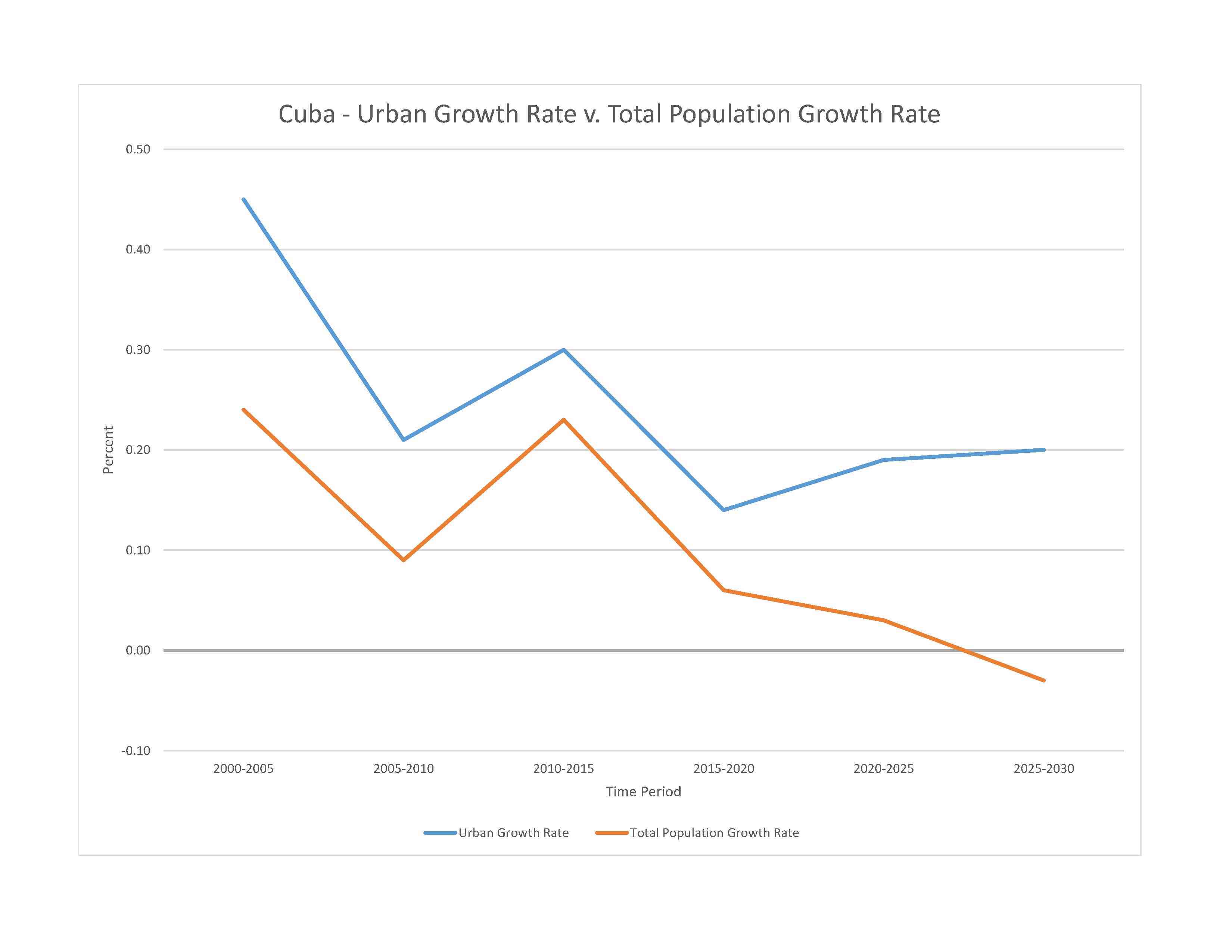
10,985,974 (2023 est.)
noun: Cuban(s)
adjective: Cuban
White 64.1%, Mulatto or mixed 26.6%, Black 9.3% (2012 est.)
note: data represent racial self-identification from Cuba's 2012 national census
Spanish (official)
major-language sample(s):
La Libreta Informativa del Mundo, la fuente indispensable de información básica. (Spanish)
The World Factbook, the indispensable source for basic information.
Spanish audio file:
Christian 58.9%, folk religion 17.6%, Buddhist
note: folk religions include religions of African origin, spiritualism, and others intermingled with Catholicism or Protestantism; data is estimative because no authoritative source on religious affiliation exists for Cuba
0-14 years: 16.39% (male 926,457/female 874,347)
15-64 years: 66.81% (male 3,692,573/female 3,647,316)
65 years and over: 16.8% (2023 est.) (male 835,005/female 1,010,276)
total dependency ratio: 45.9
youth dependency ratio: 23.1
elderly dependency ratio: 22.9
potential support ratio: 4.4 (2021 est.)
total: 42.3 years (2023 est.)
male: 40.8 years
female: 44.3 years
-0.19% (2023 est.)
10 births/1,000 population (2023 est.)
9.4 deaths/1,000 population (2023 est.)
-2.5 migrant(s)/1,000 population (2023 est.)
large population clusters found throughout the country, the more significant ones being in the larger towns and cities, particularly the capital of Havana
urban population: 77.5% of total population (2023)
rate of urbanization: 0.19% annual rate of change (2020-25 est.)

2.149 million HAVANA (capital) (2023)
at birth: 1.06 male(s)/female
0-14 years: 1.07 male(s)/female
15-64 years: 1 male(s)/female
65 years and over: 0.71 male(s)/female
total population: 0.99 male(s)/female (2023 est.)
39 deaths/100,000 live births (2020 est.)
total: 4.1 deaths/1,000 live births (2023 est.)
male: 4.6 deaths/1,000 live births
female: 3.5 deaths/1,000 live births
total population: 79.9 years (2023 est.)
male: 77.5 years
female: 82.4 years
1.71 children born/woman (2023 est.)
0.83 (2023 est.)
69% (2019)
improved: urban: 98.9% of population
rural: 97% of population
total: 98.5% of population
unimproved: urban: 1.1% of population
rural: 3% of population
total: 1.5% of population (2020 est.)
12.5% of GDP (2020)
8.42 physicians/1,000 population (2018)
5.3 beds/1,000 population (2017)
improved: urban: 94.8% of population
rural: 87% of population
total: 93% of population
unimproved: urban: 5.2% of population
rural: 13% of population
total: 7% of population (2017 est.)
degree of risk: intermediate (2023)
food or waterborne diseases: bacterial diarrhea and hepatitis A
vectorborne diseases: dengue fever
24.6% (2016)
total: 4.7 liters of pure alcohol (2019 est.)
beer: 1.77 liters of pure alcohol (2019 est.)
wine: 0.23 liters of pure alcohol (2019 est.)
spirits: 2.69 liters of pure alcohol (2019 est.)
other alcohols: 0.01 liters of pure alcohol (2019 est.)
total: 17.9% (2020 est.)
male: 25.5% (2020 est.)
female: 10.3% (2020 est.)
2.4% (2019)
58% (2023 est.)
women married by age 15: 4.8%
women married by age 18: 29.4%
men married by age 18: 5.9% (2019 est.)
N/A
definition: age 15 and over can read and write
total population: 99.7%
male: 99.6%
female: 99.7% (2021)
total: 14 years
male: 13 years
female: 15 years (2021)
illicit emigration is a continuing problem; Cubans attempt to depart the island and enter the US using homemade rafts, alien smugglers, direct flights, or falsified visas; Cubans also use non-maritime routes to enter the US including direct flights to Miami and overland via the southwest border; the number of Cubans migrating to the US surged after the announcement of normalization of US-Cuban relations in late December 2014 but has decreased since the end of the so-called "wet-foot, dry-foot" policy on 12 January 2017
NOTE: The information regarding Cuba on this page is re-published from the 2024 World Fact Book of the United States Central Intelligence Agency and other sources. No claims are made regarding the accuracy of Cuba 2024 information contained here. All suggestions for corrections of any errors about Cuba 2024 should be addressed to the CIA or the source cited on each page.
This page was last modified 04 May 24, Copyright © 2024 ITA all rights reserved.